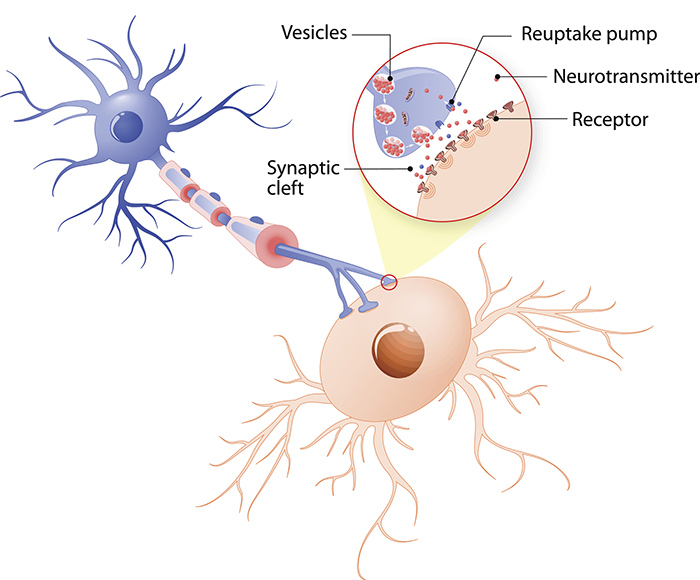Neurotransmitters are often referred to as the body’s chemical messengers. They are the molecules used by the nervous system to transmit messages between neurons, or from neurons to muscles.
Communication between two neurons happens in the synaptic cleft (the small gap between the synapses of neurons). Here, electrical signals that have travelled along the axon are briefly converted into chemical ones through the release of neurotransmitters, causing a specific response in the receiving neuron.

A neurotransmitter influences a neuron in one of three ways: excitatory, inhibitory or modulatory.
An excitatory transmitter promotes the generation of an electrical signal called an action potential in the receiving neuron, while an inhibitory transmitter prevents it. Whether a neurotransmitter is excitatory or inhibitory depends on the receptor it binds to.
Neuromodulators are a bit different, as they are not restricted to the synaptic cleft between two neurons, and so can affect large numbers of neurons at once. Neuromodulators therefore regulate populations of neurons, while also operating over a slower time course than excitatory and inhibitory transmitters.
Most neurotransmitters are either small amine molecules, amino acids, or neuropeptides. There are about a dozen known small-molecule neurotransmitters and more than 100 different neuropeptides, and neuroscientists are still discovering more about these chemical messengers. These chemicals and their interactions are involved in countless functions of the nervous system as well as controlling bodily functions.
The Inhibitory (Calming) Neurotransmitters
The Inhibitory System comprises mainly GABA and serotonin and serves to, among other things, “calm” your central nervous system.
- GABA
- Serotonin
The Excitatory (Stimulating) Neurotransmitters
The two principle stimulating neurotransmitters are dopamine and norepinephrine.
- Dopamine
- Norepinephrine
- Epinephrine
- Glutamate
- Histamine
- PEA (2-phenylethylamine)
